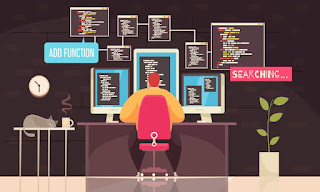AI-Powered Computer Vision in Laboratory Environments: Enhancing Safety & Efficiency
Artificial Intelligence (AI) is revolutionizing laboratory environments, optimizing efficiency and ensuring safety. As per the latest 2024 survey, over 68% of laboratory professionals leverage AI in their work, marking a 14% increase from the previous year. Computer Vision for Lab Efficiency is transforming research workflows by automating sample analysis, ensuring PPE compliance, and detecting hazards. Laboratories demand high precision in research, quality control, and safety measures, making AI-powered computer vision a game-changer in this domain.
Different challenges in laboratory environments have encouraged companies to adopt computer vision technology for precise solutions. In this article, we will explore the key challenges in lab infrastructure and how AI-powered vision systems can address them, with a focus on real-world applications in research and industrial laboratories.
Challenges & Considerations in Laboratory Environments
Risks in Safety
Laboratories handle thousands of hazardous materials that necessitate strict safety precautions. AI plays a crucial role in Fire Detection in Laboratories, preventing potential accidents by continuously monitoring hazardous zones.
Manual Error & Equipment Failures
Misidentification of lab tools, manual process errors, and equipment failures can cause delays and inconsistent results. AI-powered computer vision automates monitoring and reduces human errors.
PPE Compliance
Ensuring that lab personnel wear proper safety gear is essential. AI-enabled vision systems can monitor PPE compliance in real time, reducing risks and ensuring adherence to safety protocols.
Microscopic Sample Analysis
Microscopic sample identification and classification require precision. AI-powered models can automate and streamline this process, reducing manual errors and improving research accuracy.
Role of Computer Vision in Laboratory Environments
Computer vision, driven by AI, has diverse applications in laboratories, from tracking equipment usage to detecting hazardous incidents. By training advanced models such as YOLO11, laboratories can integrate AI-powered detection systems into their workflows, enhancing safety and operational efficiency.
Prospects of Training YOLO11 for Lab Environments
Data Collection
Labs collect images of different tools, PPE compliance, and sample slides to build training datasets.
Data Annotation
Images are labeled with bounding boxes to detect objects like test tubes and chemical spills, allowing AI models to recognize key elements.
Model Training
YOLO11 is trained using these datasets to identify and classify lab-related incidents accurately.
Validation & Testing
The trained model undergoes rigorous evaluation with additional datasets to ensure accuracy before deployment.
Deployment of Lab Cameras
Once validated, the model is integrated into lab surveillance systems, providing real-time monitoring and insights for researchers.
With precise training on lab-specific datasets, research facilities and industrial labs can deploy AI-powered vision systems to enhance monitoring and automate safety compliance.
Major Applications of Computer Vision in Laboratory Settings
AI is reshaping laboratory workflows, making them smarter and more efficient. Below are some of the key applications:
Identification & Classification of Cells in Microscopic Images
In medical research, accurate microscopic analysis is critical. Traditional manual cell identification is time-consuming and requires expert supervision. AI models like YOLO11 streamline this process by detecting and classifying blood cell types in real time. These models analyze large datasets with higher consistency, helping detect diseases and identify abnormalities efficiently.
PPE Compliance in Laboratory Settings
Maintaining strict PPE compliance is crucial when working with hazardous chemicals. Manual checks can be inconsistent, leading to safety risks. AI-powered vision systems continuously monitor PPE compliance, ensuring that lab personnel wear masks, gloves, and other protective gear. This not only enhances lab safety but also ensures regulatory compliance.
Identifying Laboratory Hazards
Lab environments often deal with flammable substances and high-temperature tools, increasing the risk of fires and chemical spills. AI-powered systems can detect irregularities on lab surfaces, differentiating between flammable and non-flammable liquids. Integrated with safety protocols, these systems issue real-time alerts to lab personnel, minimizing risks and preventing accidents.
Detection & Classification of Lab Equipment
Efficient laboratory management requires precise tracking of equipment. Manual tracking methods often lead to misplaced instruments and operational inefficiencies. AI-driven vision models analyze video feeds to detect and classify lab instruments, monitor equipment usage, and detect signs of wear and tear, ensuring optimal lab operations.
Future Opportunities for Computer Vision in Laboratories
As AI continues to evolve, newer applications of computer vision are emerging, enhancing lab efficiency and safety.
AI-based Quality Control: Automated sample verification and quality control systems ensure consistent research outcomes.
AI-enabled AR Systems: Augmented Reality (AR) tools assist lab personnel in detecting equipment and adhering to safety protocols.
AI-powered Incident Response: Smart monitoring systems provide actionable insights, reducing human intervention and response time.
Conclusion
Computer vision is transforming laboratory environments, enhancing safety, efficiency, and precision. From tracking equipment usage to detecting hazardous incidents, AI-powered object detection ensures that labs operate seamlessly. By integrating AI-driven monitoring systems, research facilities can minimize errors and respond promptly to safety concerns.
At Nextbrain, our AI Video Analytics Software is designed to handle complex computer vision models such as YOLO11, enabling businesses to automate laboratory equipment detection and streamline operations.
Want to explore how AI video analytics can create smart lab workflows? Contact our experts today!
.png)
.png)
%20(1).jpg)


Comments
Post a Comment